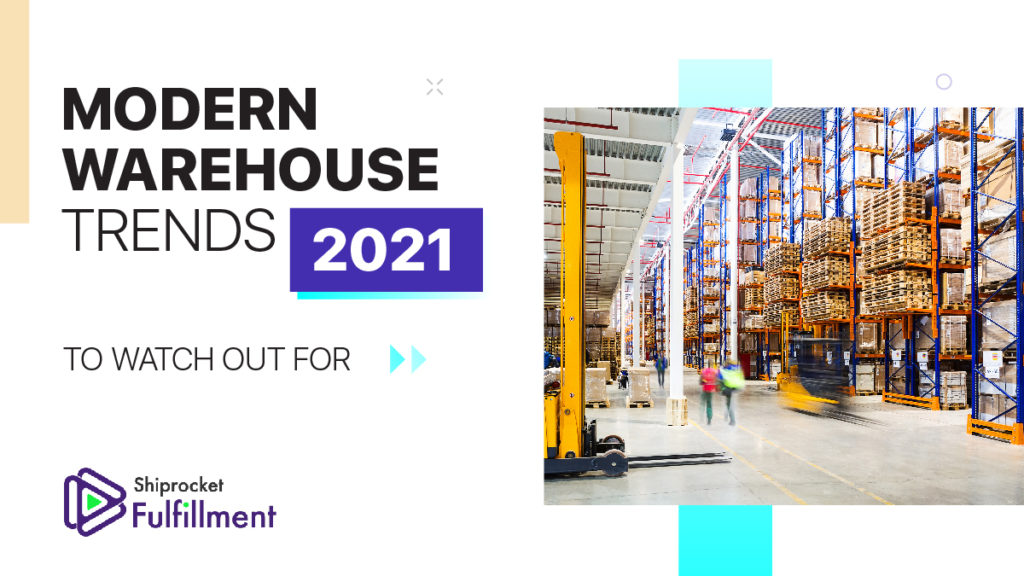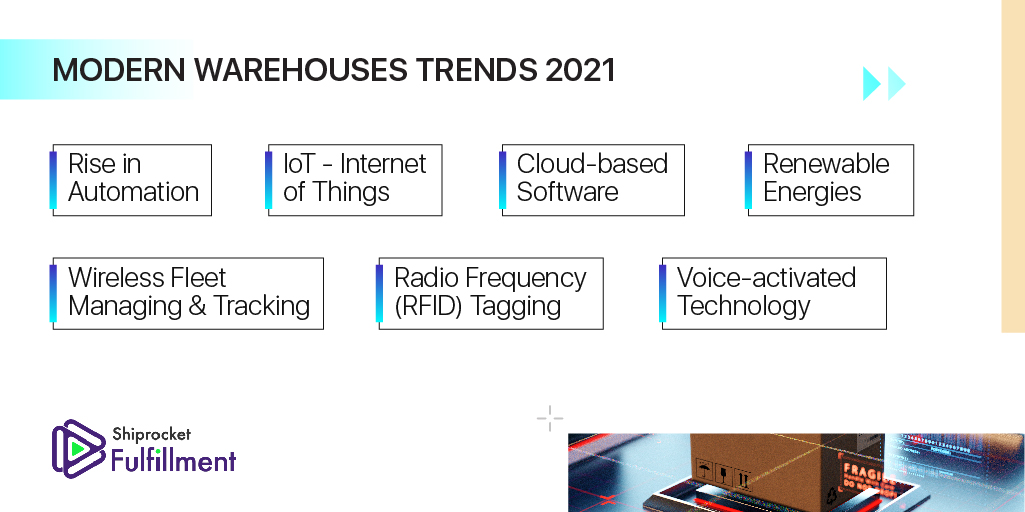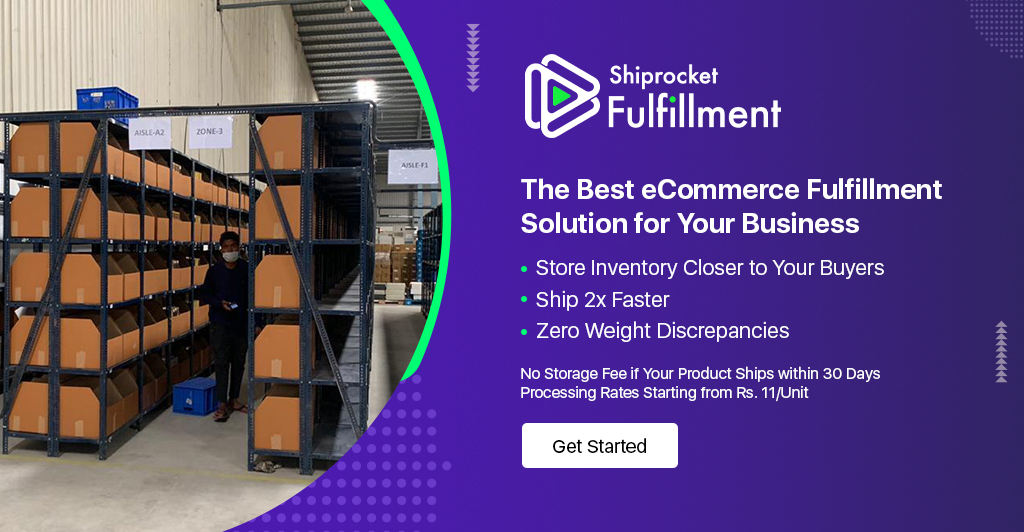Warehousing is an integral part of the logistics industry. It bridges the gap between the production and consumption of products. With the outbreak of the worldwide pandemic COVID-19, things have changed. The modern warehouse has come into existence. New warehousing technologies and practices are being invented to meet the greater eCommerce sales these days.

Flexibility in terms of fluctuating demand has been the biggest asset for modern-day warehouses. Meanwhile, automation in the industry continues to offer better efficiencies and cost-effective measures. The design and functioning of the modern warehouse are other benefits on offer. To help eCommerce have a flexible but strong supply chain, modern warehouses are implementing the following changes:
- Warehousing services on demand
- Increased automation
- Warehouse to go green
- IoT technology
Read below know the modern warehouse trends for 2025:
Modern Warehouse Trends 2025
The outbreak of COVID19 has changed the logistics and warehousing sector a lot. During the lockdown, many organizations were left with excess inventory that could not be sold, whereas many organizations could not get access to inventory. The supply chain status was a nightmare with unpredictable consumer behavior, unprecedented demands for raw materials and products.
Currently, the warehouses have made some required changes to stabilize the supply chain. But, now is the time to adopt some strategies to re-organize the warehouse. Here are a few modern warehouse trends to help you up your warehousing game:

The rise in Automation
Warehouses around the world have automated most of the crucial functions in warehouses across the world. Apart from automation in the functions, it is estimated that by the end of 2025, warehouses will have robots installed as well. Robots can help with tasks like picking, sorting, packing, batching, shipping, and shipping. Many big warehousing companies have already invested large amounts in automation to make their fulfillment centers more efficient. Robots can handle thousands of tasks efficiently and cost-effectively.
Mobile Robots
Mobile robots are machines that are not bound to be placed in one place. They are not fixed and can be moved. They can move around the warehouse; they can be guided to follow a specific route or path. They can be navigated manually from other devices to ensure they move around a specific route only.
Mobile robots can be used to transport and take over duties that are handled by manual forklifts, conveyors, and towing machines. They can also be used for packing, sorting, and moving goods.
Drones
Drones have been in operations since around 2013 in warehousing functions. The improved technology and innovations in hardware and software have led to the increased use of drones. They can be navigated safely without GPS. Besides, they can correctly locate or identify inventory as well. On top of that, drones are extremely cost-efficient and scalable as well.
Modern drones come with HD quality video capacity as well as cloud connectivity. The best part is that they are now being used for shipping and delivery as well. The other uses of drones include barcode scanning, cycle counting, inspecting stock, retrieving goods, and conducting aerial inventory scans. The drones these days come with improved battery life and stability.
IoT – Internet of Things
IoT or the Internet of Things helps in connecting millions of devices (worldwide) and sharing data through the internet connection. Through a wireless or internet connection, anything can be accessed or shared. With the help of IoT, important information or data can be communicated in real-time without any human intervention.
The IoT is playing a pivotal role in warehousing automation as it makes the warehouse a well-connected and coordinated unit. With the help of IoT, modern warehouses can be connected well with robots, drones, equipment, and inventory. The IoT helps the systems to collect, share, and store data. It also enables tracking of all the connected devices, like robots and drones, and managing temperature in cold storage warehousing.

Cloud-based Software
Cloud-based software has become an essential part of modern-day warehousing units. They help in managing warehouses. They don’t require an IT infrastructure but can be handled conveniently by the team. Many organizations are widely using cloud-based software, and it is undoubtedly going to become one of the most used warehousing strategies in the coming time.
Wireless Fleet Managing & Tracking
Wireless fleet management is also gaining a lot of traction lately. It can help monitor and control warehousing vehicles. It helps in completing the tasks efficiently without any delay due to finding and locating vehicles. With the help of wireless fleet tracking and managing, the vehicles and their performance can be monitored conveniently. It can also assist in vehicle maintenance, in terms of data collection related to vehicle service warnings, damage alerts, driving risks, and other such problems.
Radio Frequency (RFID) Tagging
RFID or radio frequency tagging is a technology used to identify the tags attached to products or goods digitally. It uses electromagnetic fields to fulfill its tasks. RFID tags store a lot of data, and they can be integrated with IoT to enhance inventory management. Many warehousing managers have increased the usage of RFID for inventory counting lately.
Voice-activated Technology
More warehousing units are turning away the conventional methods and are using voice-activated technology for workflow processes. It takes a lot of time for warehouse workers to scan the barcodes if the serial numbers are too long. A voice-activated technology will increase productivity as the workers will be able to complete their tasks in lesser time. In addition, the technology also improves accuracy, which can help improve customer satisfaction and higher products.
Renewable Energies
Many warehousing units are exploring solar and renewable energy sources as warehouses have high electricity consumption rates. Warehouses have huge roofs where they can install solar panels. Renewable energy helps lower down operation costs as electricity bills are reduced.
The Final Words
Modern technologies like automation and IoT are slowly but steadily transforming the way warehouses operate. Automation and other modern trends are the best ways to improve warehousing efficiency. Moreover, increased efficiency and productivity can help make the warehousing future-proof.






